Healing the inner child at Magic Garden, catching a glimpse of life in a Konkan village, delving into the literary legacy of poet Keshavsut, and reliving the regal past at Ratnadurg, Ratnagiri was a tapestry of colourful experiences
Up, above the world so high, I wanted to be the bird that was soaring high in the breezy sky. It sailed through the wind, past the swaying coconut trees, came down towards me, and then went higher up, where nothing could touch it.
I saw the sea change colour, as grey clouds came down to greet it. Two days in Ratnagiri were enough to convince me that the sea and sky were conspiring to create new hues that no human could emulate. From aqua blue to starry silver and grey-black, this was Nature’s cradle.
The Enchanting Konkan Coast
The Konkan strip stretches along the western coasts of Maharashtra, Goa, and Karnataka. It is embraced by the Western Ghats in the east, the Arabian Sea in the west, the Daman Ganga River in the north, and the Aghanashini River in the south. The expanse of this coastal beauty is nothing short of breathtaking.
A Brief Sojourn in Ratnagiri
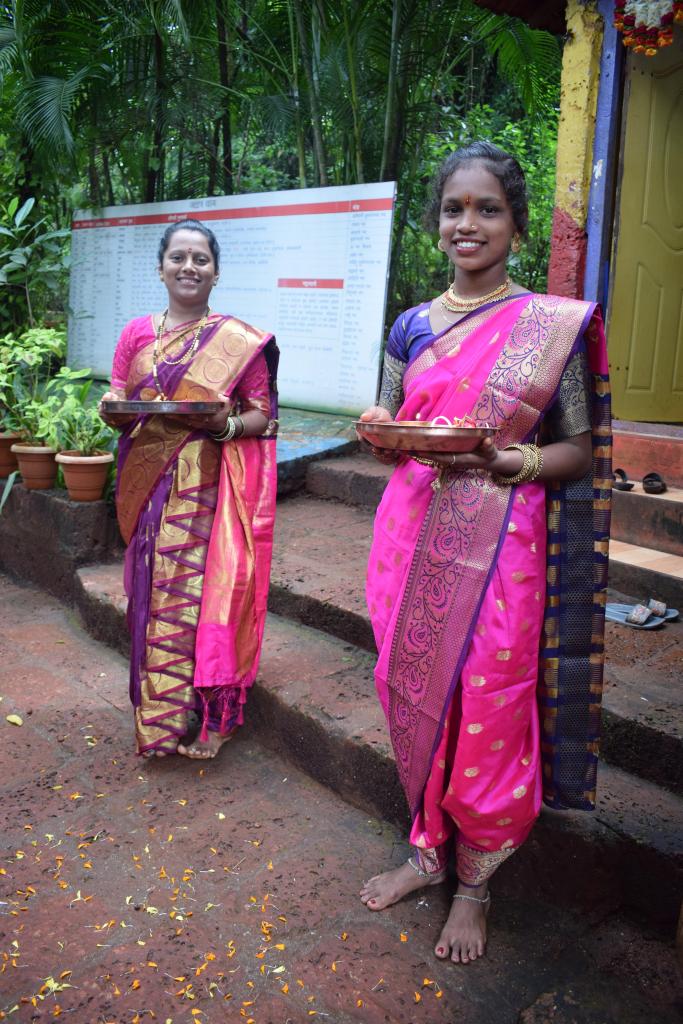
Exploring the entire Konkan belt could take months, but we spent two nights in the town renowned for its mangoes and seafood, Ratnagiri. This is also where Lokmanya Bal Gangadhar Tilak, the visionary behind the Ganesh Chaturthi festival, spent his childhood. Although we didn’t visit a mango orchard or meet the fishermen, we feasted our eyes on stunning landscapes and immersed ourselves in the tapestry of history and culture.
The name ‘Konkan’ is derived from the legend of Parashurama’s axe, which supposedly created this picturesque land strip. Kona is corner and Kan is a piece of land. It’s also known as ‘Parashurama-Sṛiṩhṭi’.
Prachin Konkan Eco-Museum & Magic Garden: Where Culture Meets Nature
The journey through Ratnagiri’s hidden gems began with a trip to Prachin Konkan Eco-Museum and its enchanting Magic Garden, both situated in the serene village of Ganpatipule. This was a picturesque drive flanked by the sea on one side and verdant hills on the other, passing by fishermen’s jetties, unspoiled beaches, and rocky cliffs.
This unique eco-museum and Magic Garden is the brainchild of Vaibhav Vasudev Sardesai and his wife, aiming to showcase the rustic village life of the Konkan region and its surrounding natural beauty. Beyond preserving age-old practices, the concept empowers local women by creating livelihood opportunities and revealing the enchantment of the region to tourists.

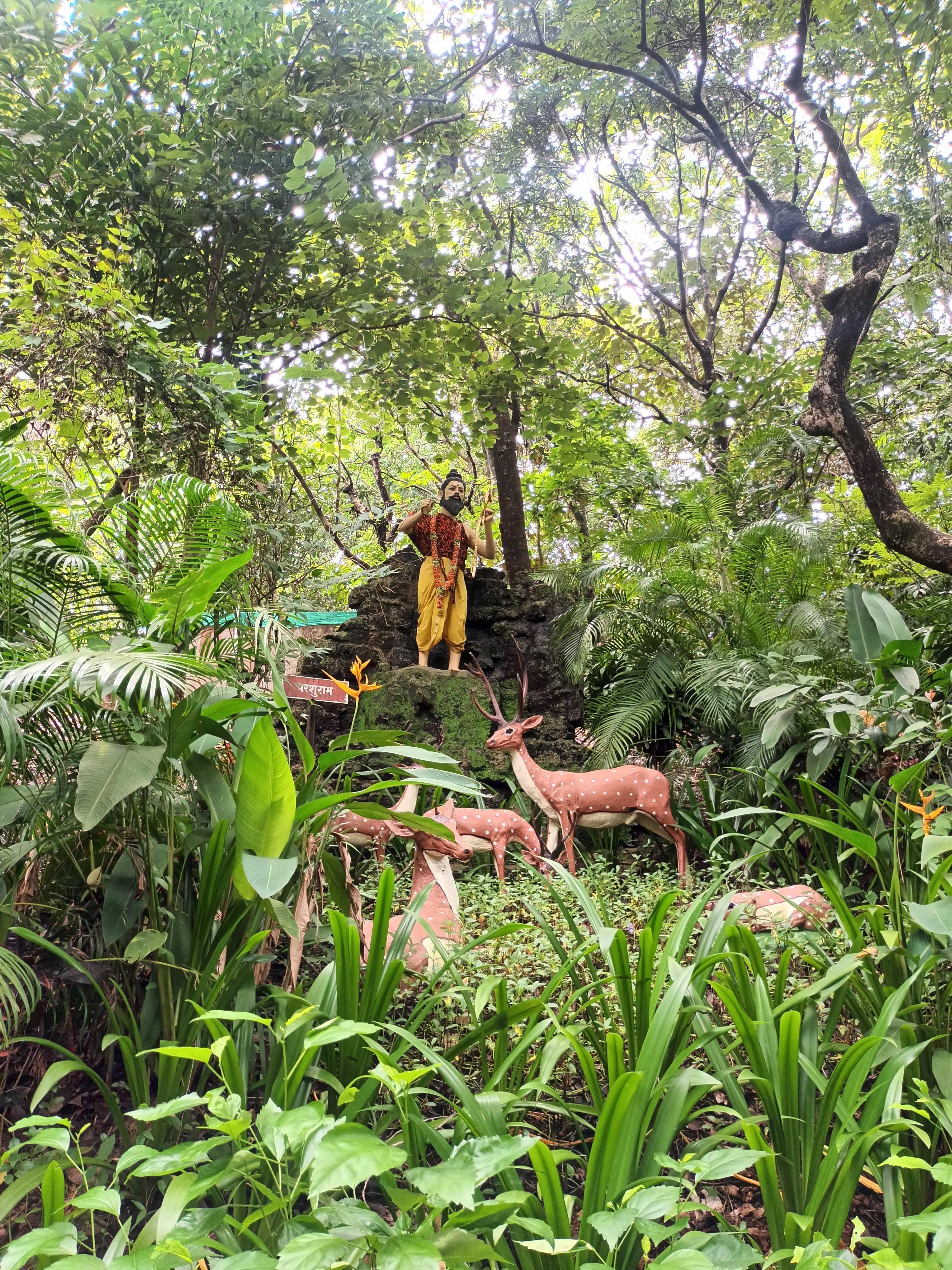
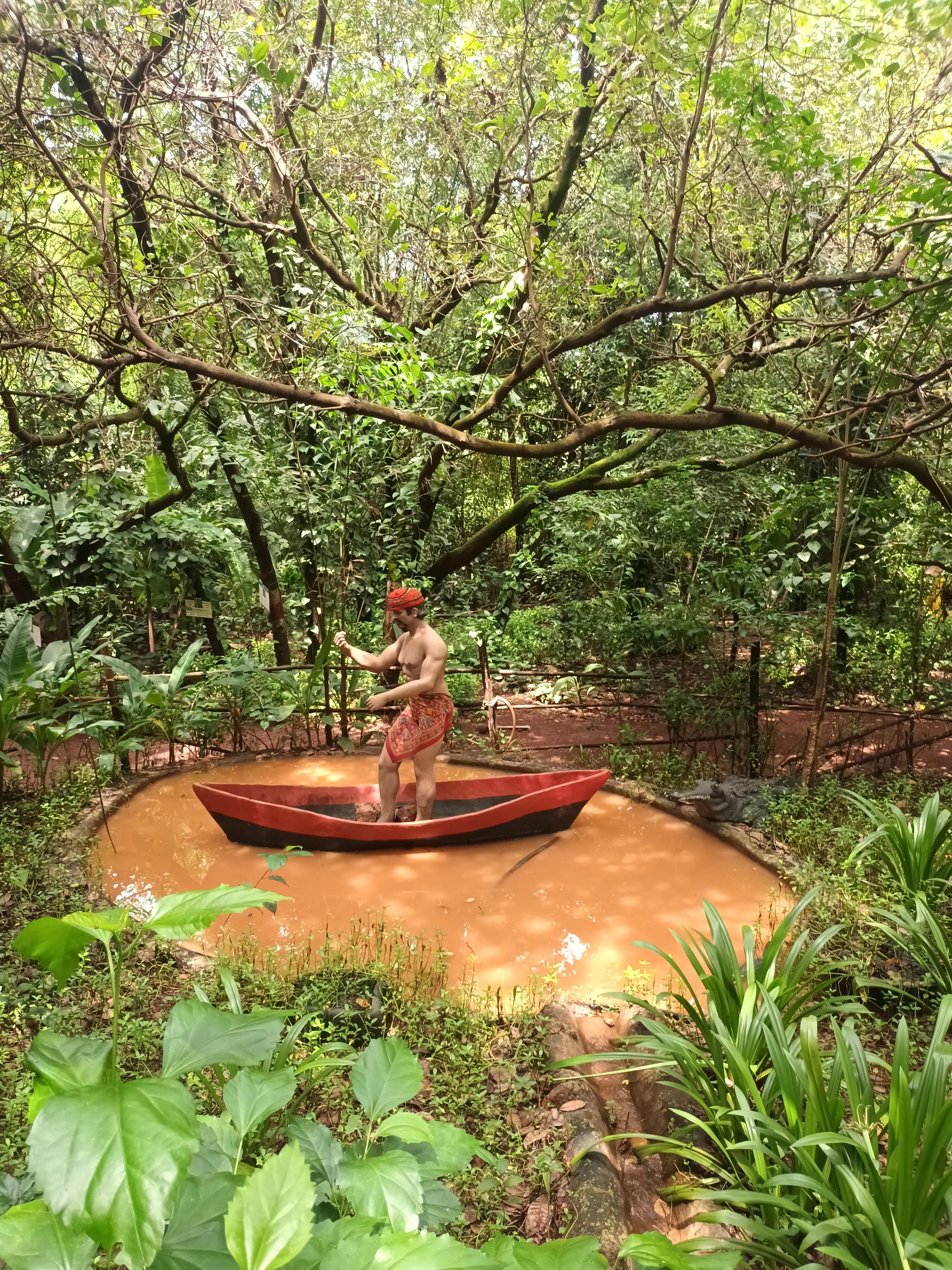
Spread across three lush acres, the museum and Magic Garden employ local women and offer a peek into various aspects of life in a Konkan village. On a guided tour, we gained insight into the region’s indigenous spices, culture, and the shells strewn along the coastline, with over 165 authentic ones on display. We travelled back 500 years to the days of the caveman, transiting through a spice and nakshatra garden to see the village life in action with models of different customs, temple, professions and the home of the village head or khot. They also host a workshop, teaching tourists how to blow a conch.
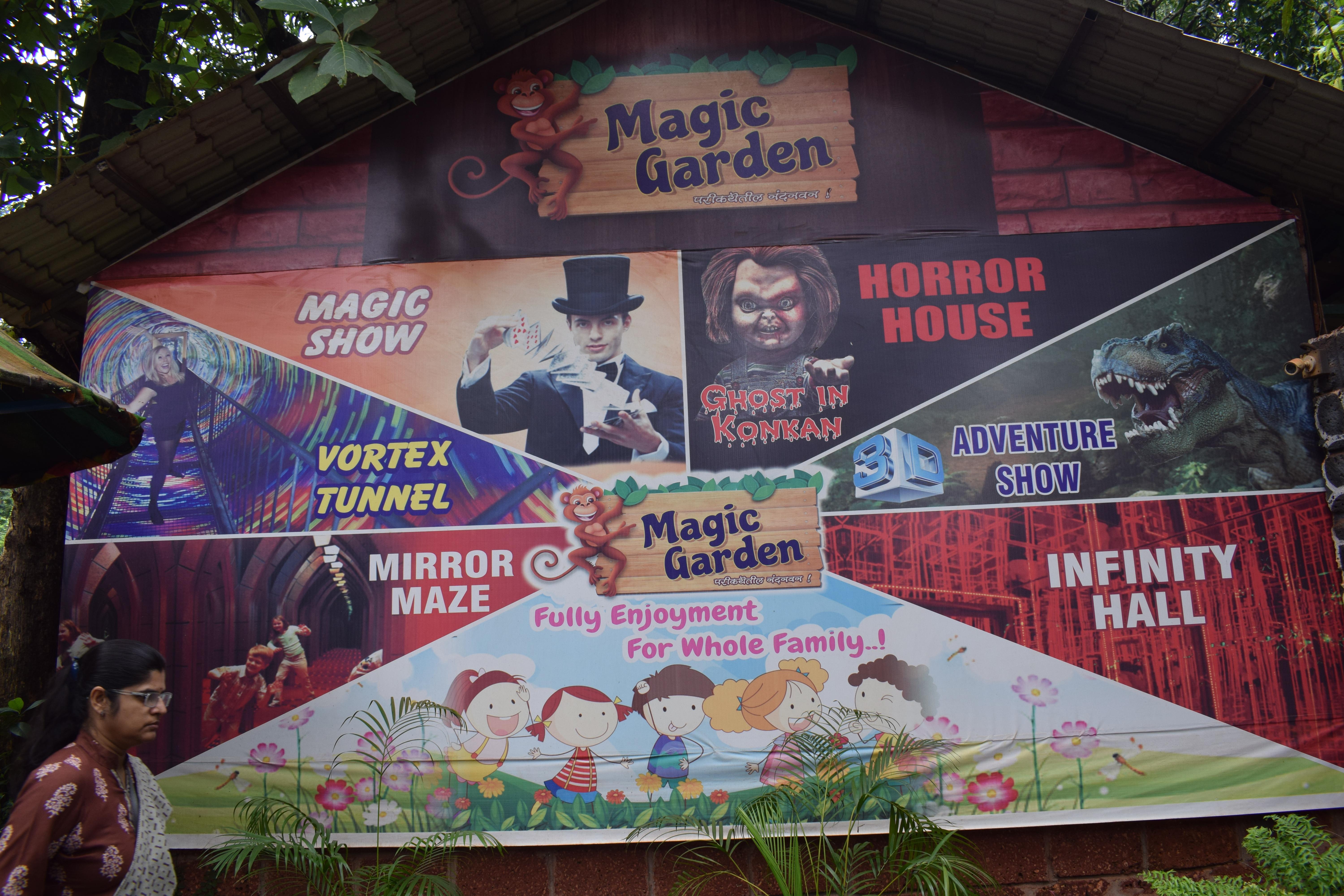
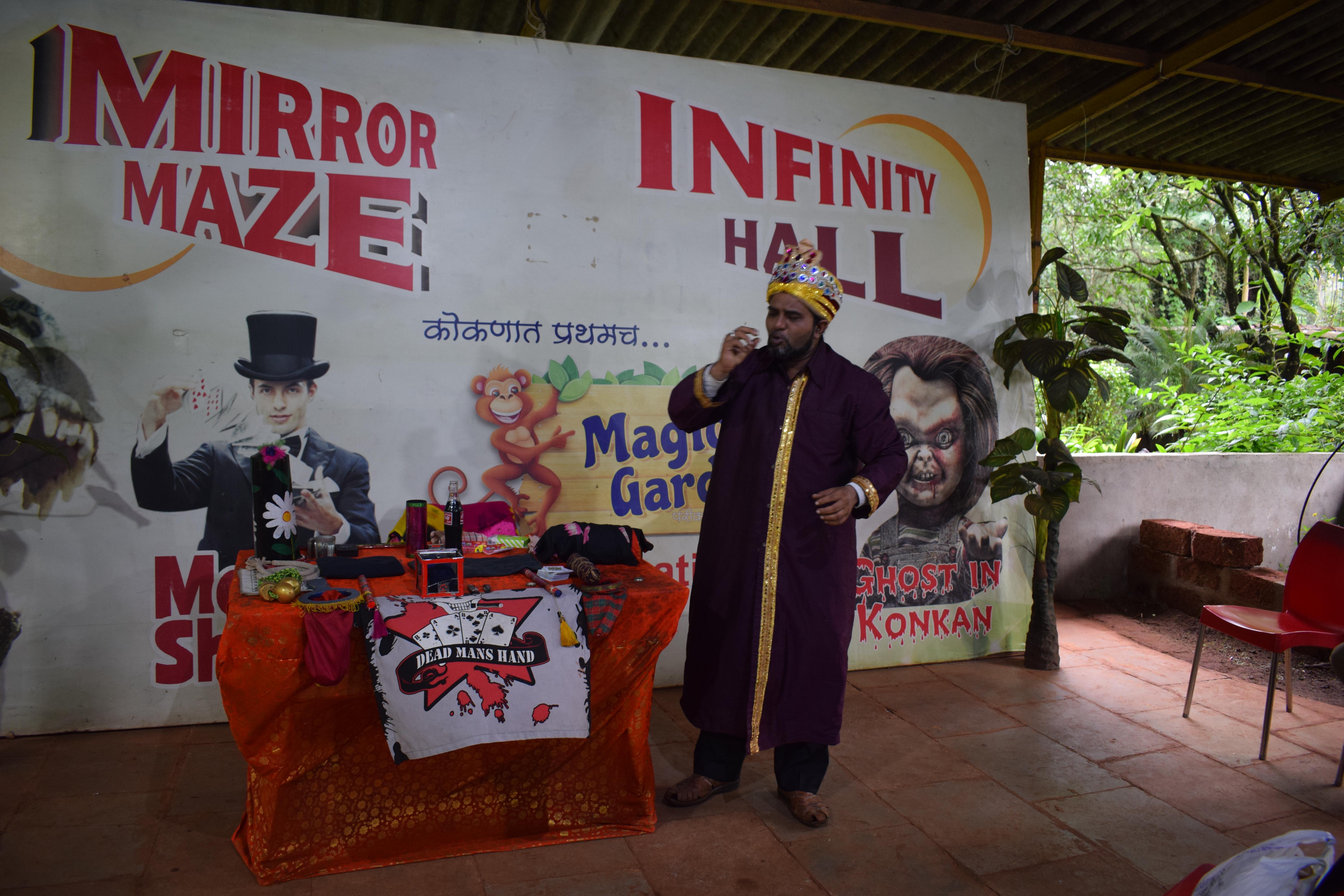
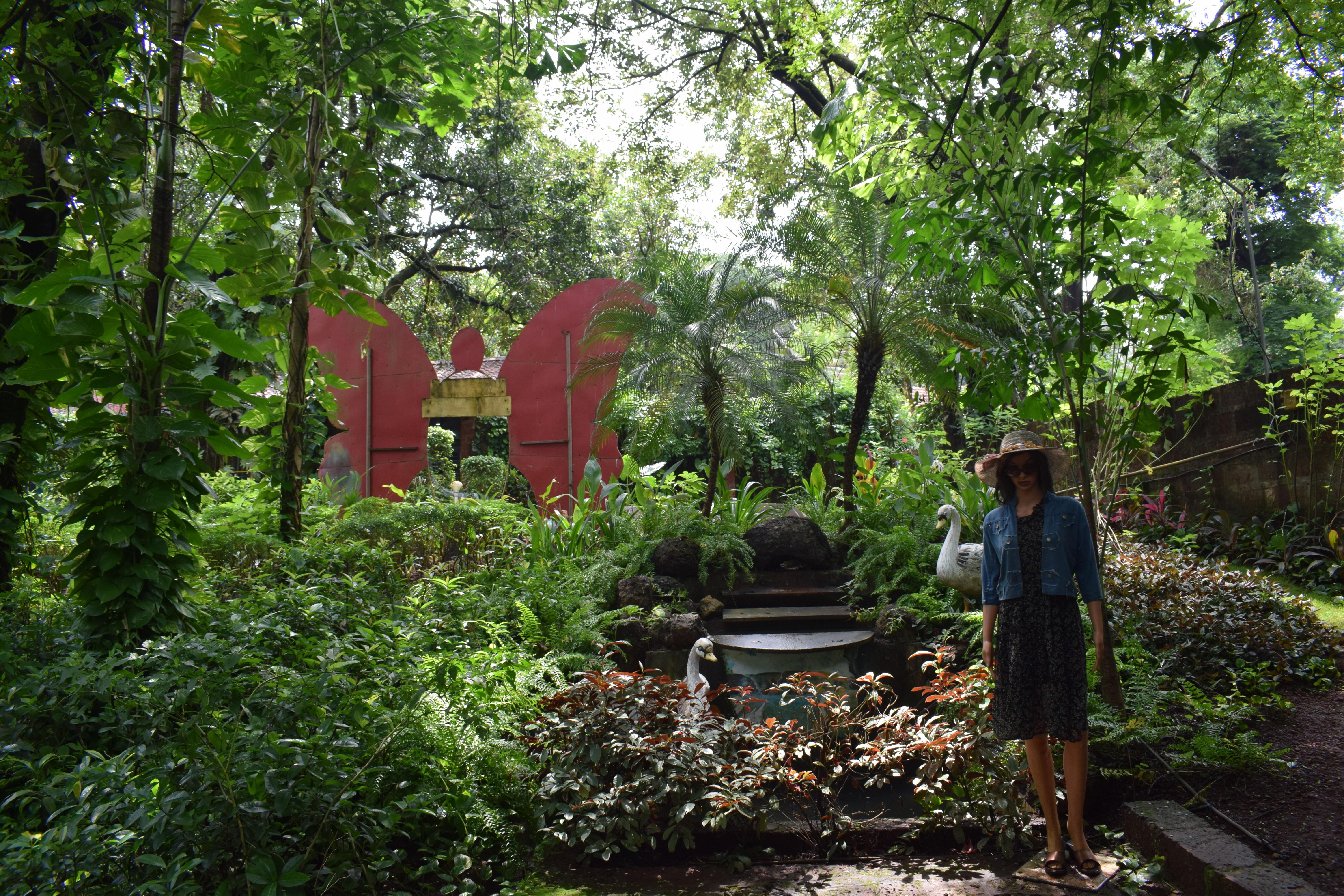
The Magic Garden rejuvenated my inner child with a walk down a vortex tunnel, an excursion into the house of ghosts, a 3D show of dinosaurs and anacondas. The Magic Show filled my world with laughter and brought a spring to my steps.
Though, we did miss the Mirror Maze and Infinity Hall, where the surreal effects of infinite mirrors and lights reigned.

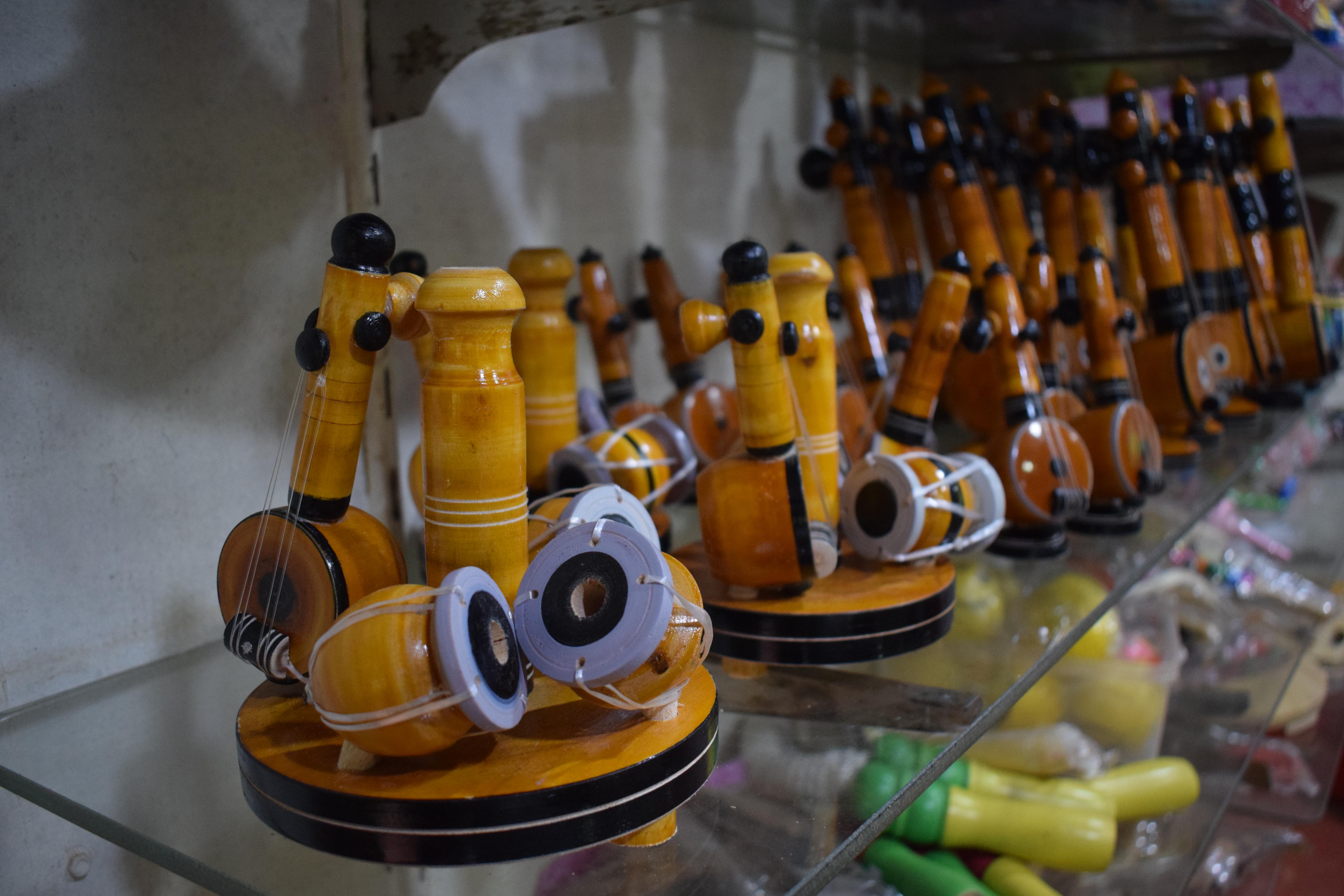
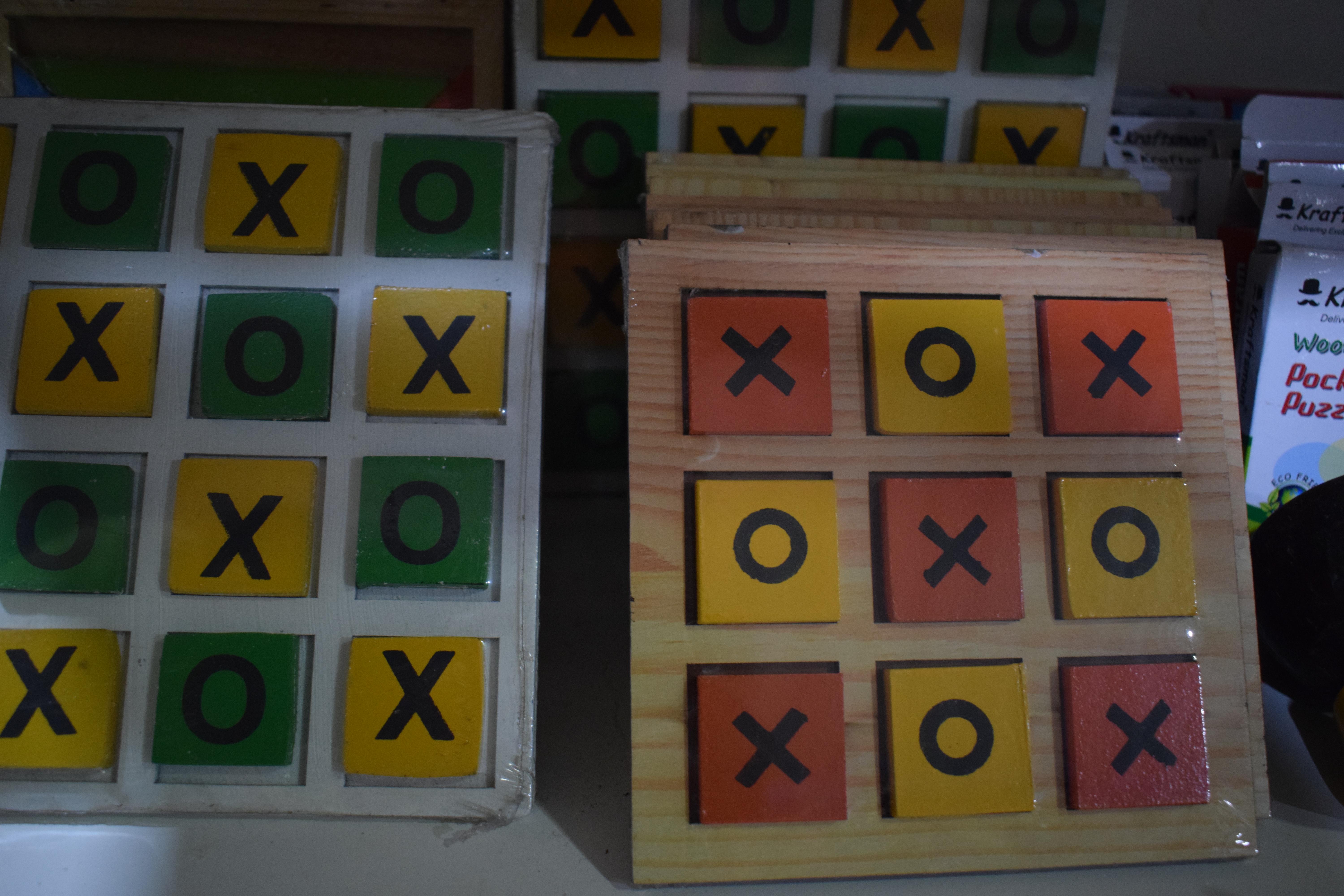
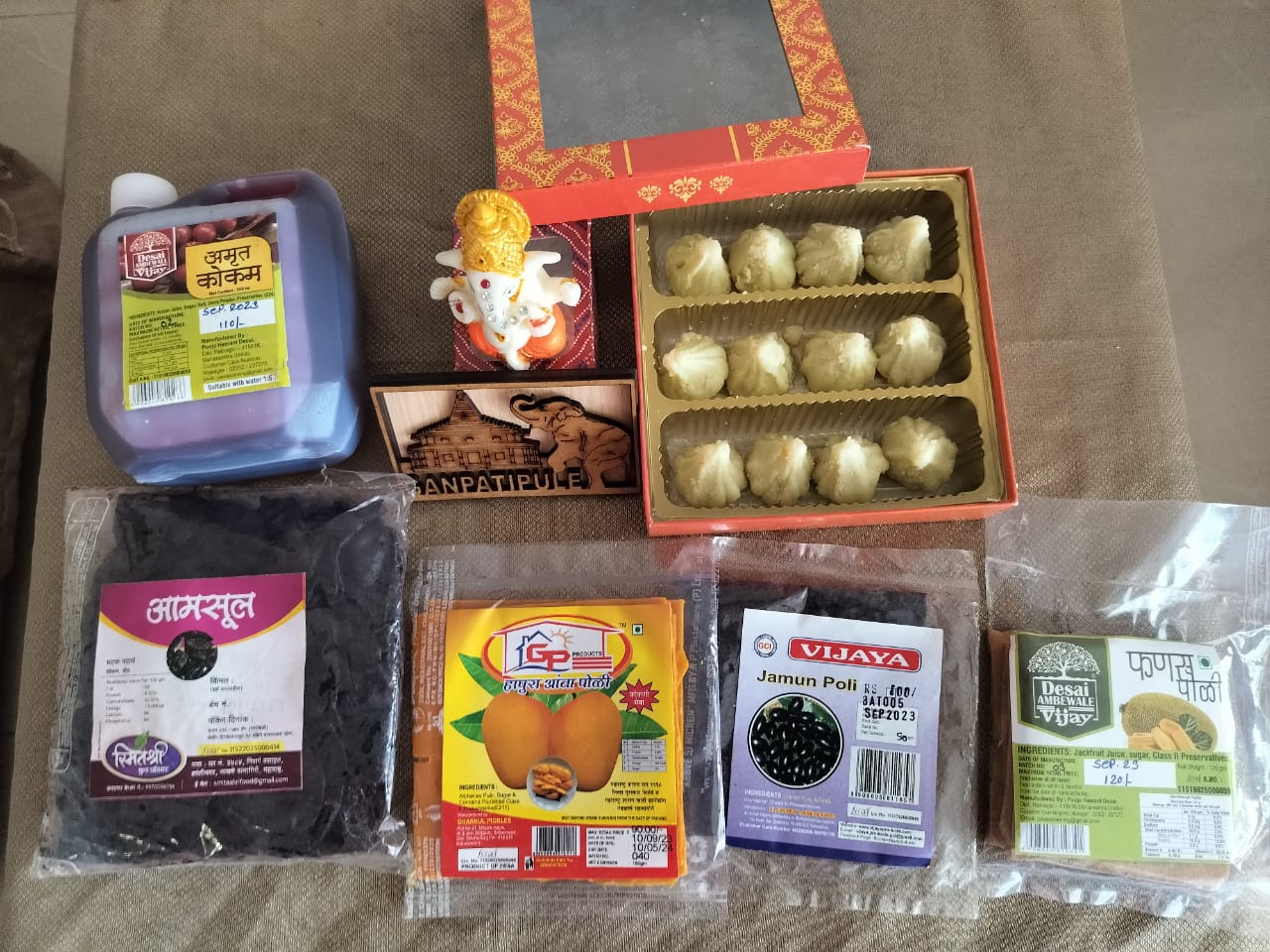
The souvenir shop offers handmade wooden toys, games, and artifacts crafted from shells. I purchased local specialties such as kokum sherbet and aam poli. They even have an online store.

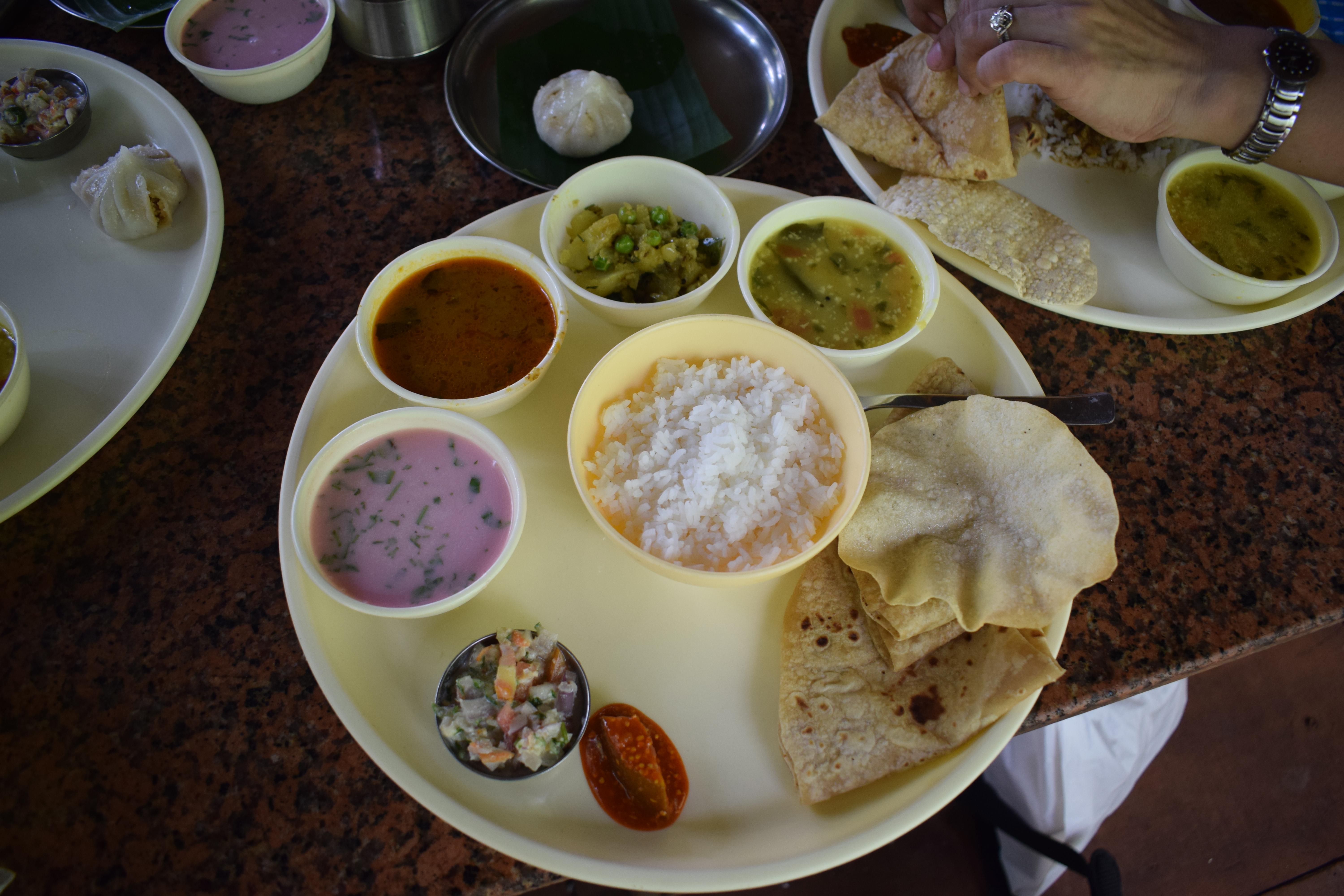
A must eat here is the sumptuous Konkani thali that includes Sol kadhi, Ukadiche Modak, assorted vegetables, and more.
Prachin Konkan Eco-Museum and Magic Garden are ticketed attractions, open from 8:30am-6pm.
Keshavsut Smarak: A Tribute to a Literary Legend
No exploration of Ratnagiri’s cultural legacy is complete without a visit to the Keshavsut Smarak in the peaceful village of Malgund. Hailed as the father of modern Marathi poetry, Keshavsut was born Krishnaji Keshav Damleji on October 7, 1866. This teacher, educator, social reformer, and staunch supporter of the Indian independence movement, passed away on November 7, 1905.
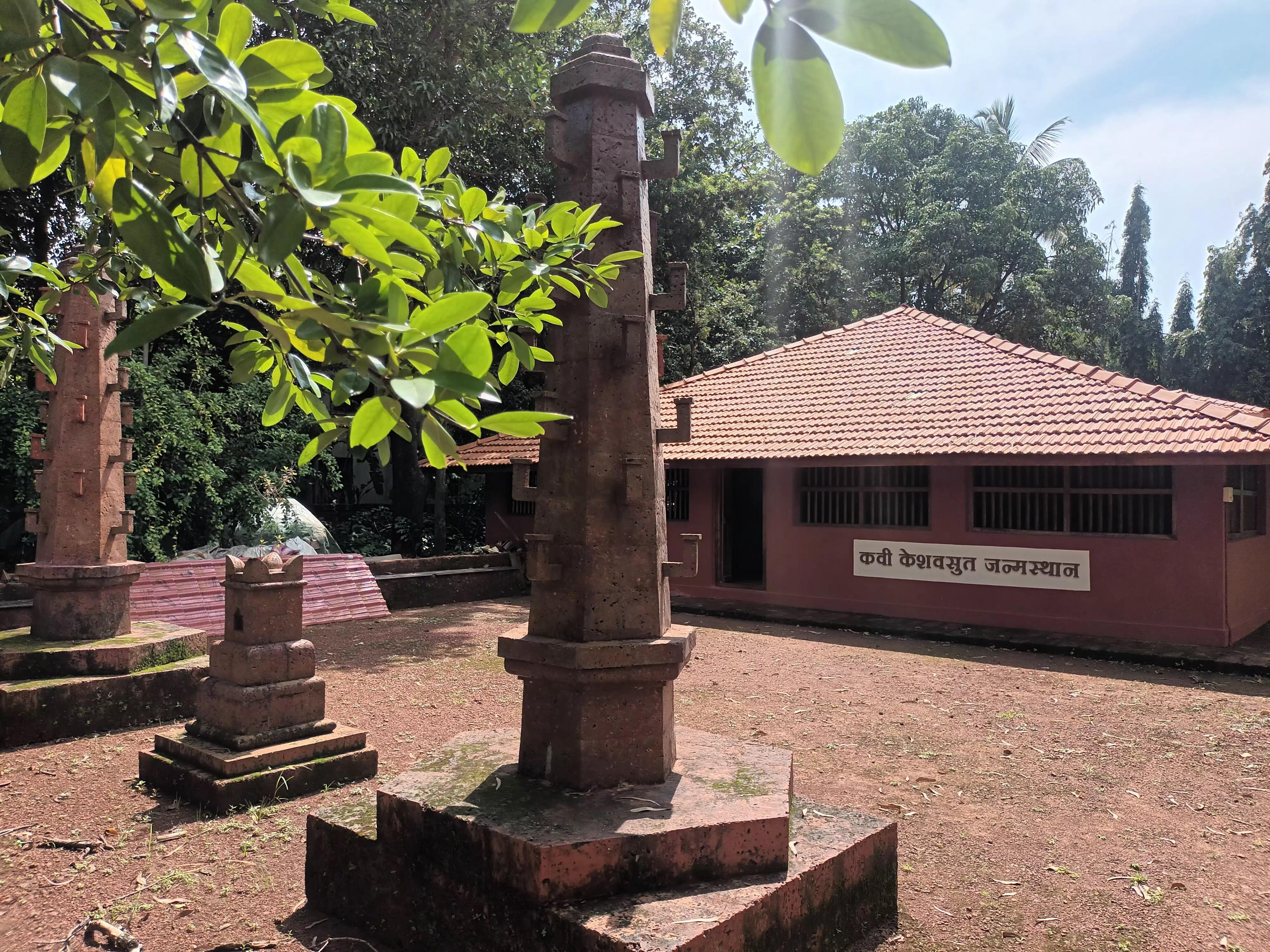

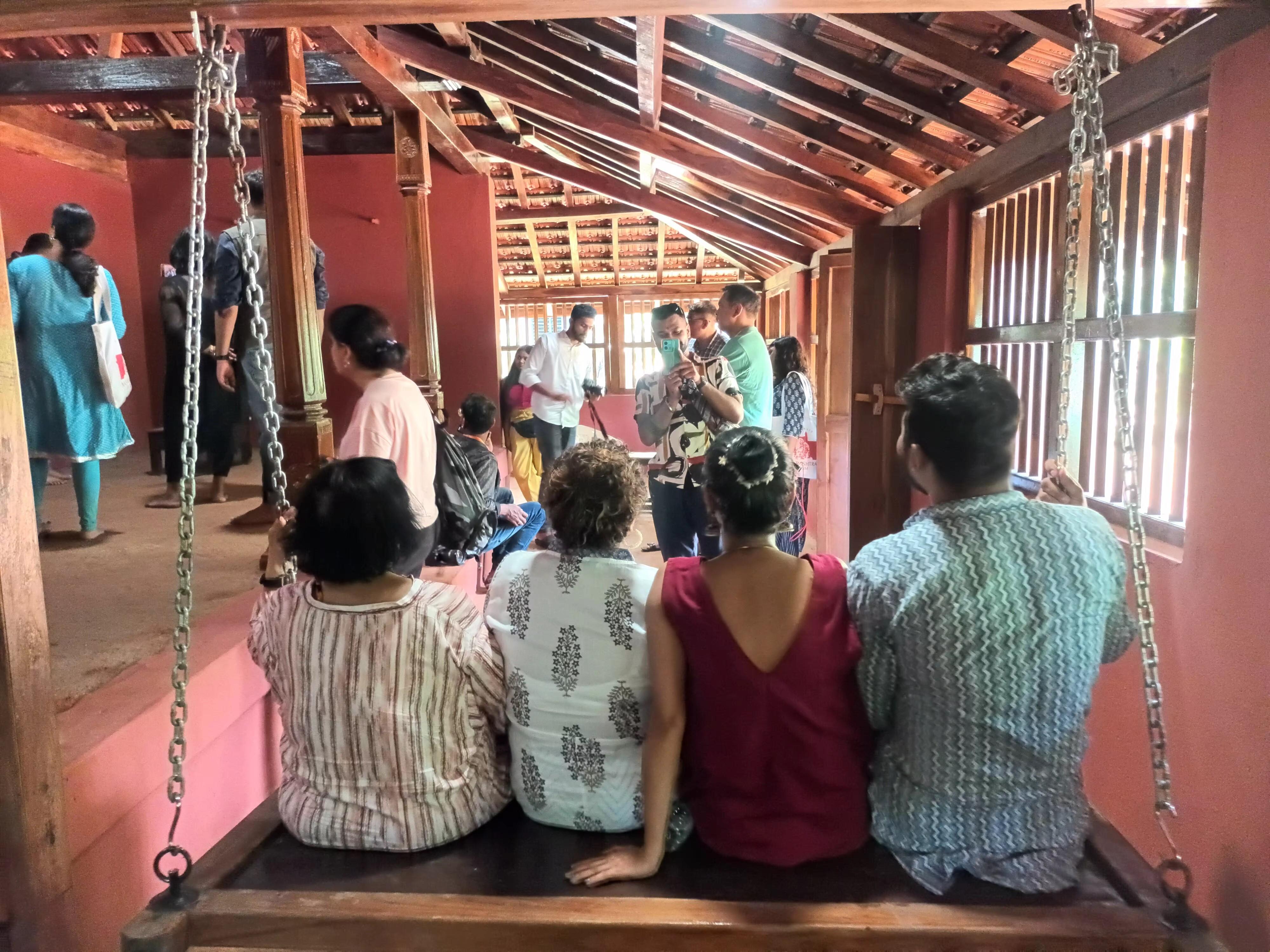
In his short but impactful 39 years, Keshavsut authored over 100 poems. Among them, the most celebrated is ‘Tutari’, a clarion call to awaken and rise against colonial rule. His poetry is celebrated for its simplicity, universality, and personal touch. It resonates deeply with readers, not just in Maharashtra but across India.
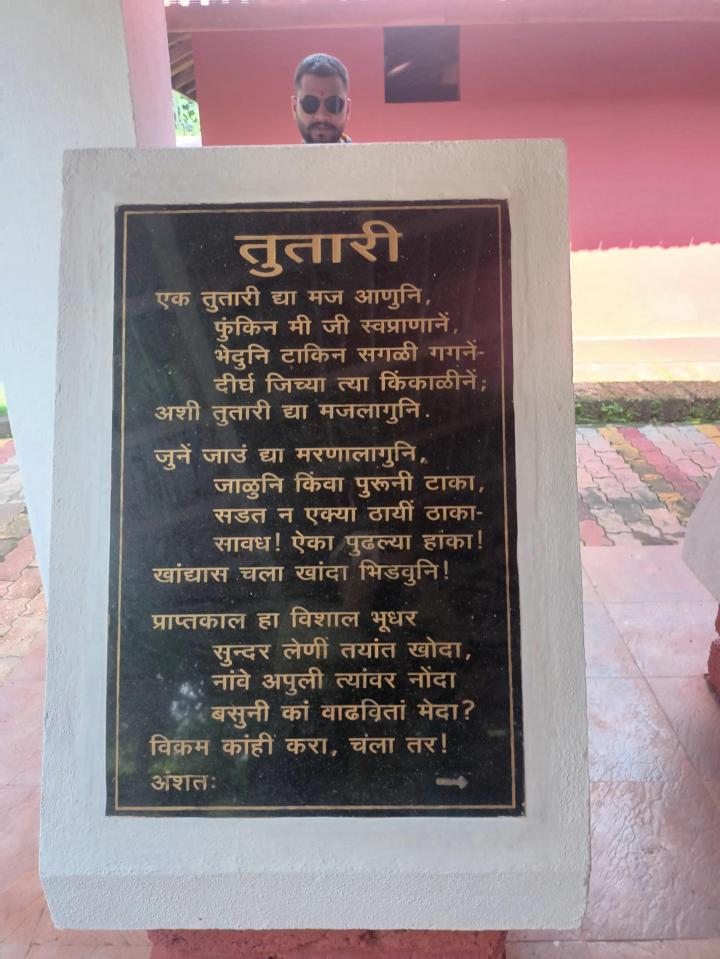
The poem ‘Tutari’ even made it to the soundtrack of the Oscar-nominated film Harishchandrachi Factory (2009). To honour the poem, on May 22, 2017, the Dadar-Sawantwadi Rajya Rani Express was christened the ‘Tutari Express’.
Keshavsut’s memorial is a moment in time, an experience of his childhood home in the picturesque village. The tranquil setting is where creativity and inspiration thrived, and his simple yet profound poems are a testament to the inspirational power of serene spaces.
The Keshavsut Smarak houses original artifacts, a library, and a gallery, providing visitors with a glimpse into the life and work of the poetic legend. The memorial is open from 9am-6pm; entrance fee is Rs 10 per person.
Ratnadurg/Bhagwati Fort: Witnessing History and Nature
Nestled atop a hill, Ratnadurg Fort has stood sentinel for centuries, protecting the coast from pirates and offering a magnificent view of the Arabian Sea and the harbour.
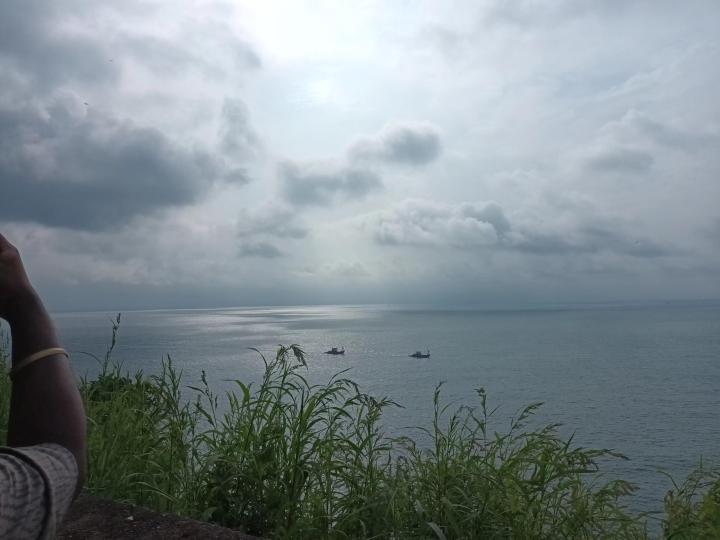
A rampart walk is a delight for nature enthusiasts, as a substantial portion of the 120-acre fort has returned to nature, making it inaccessible to the public.
Ratnadurg Fort, also known as the Ratnagiri or Bhagwati Fort, was initially built by the Bahamani Sultanate in the 17th century, subsequently falling into the hands of the Maratha Empire. Under Maratha rule, it served as a stronghold of their navy. Later, the British took over the fort.
The fort is divided into three parts: the upper fort or Balekilla, the middle Peth Fort, and the Parkot. The upper fort houses the living Bhagawati Temple; the middle fort contains ruins of various structures, including a palace, a granary, and a mosque; while Parkot features remnants of a moat and a wall.
While we didn’t explore the outermost and middle parts of the fort, or visit the Ratnadurg Fort Lighthouse, the breathtaking views and the fort’s rugged beauty needed more time. Probably, my visit would be to see the lighthouse flash lights twice a day and bask in the natural bounty around me.
Ratnadurg Fort is open from 8am-6pm, with an entry fee of Rs 10 for adults and Rs 5 for children.
Thibaw Palace: A Royal Tragedy Frozen in Time
Amidst Ratnagiri’s tranquil setting lies Thibaw Palace, a silent museum that narrates a poignant tale. This elegant palace, set against the backdrop of expansive gardens and a view of the sea, served as the house arrest site for King Thibaw Min, the last monarch of Myanmar, and his queen Supayalat. It was constructed by the British army in 1910, and its graceful design reflects a blend of cultures. They spent the final three decades of their lives in Ratnagiri, and were laid to rest on the palace grounds in 1916 and 1925, respectively.
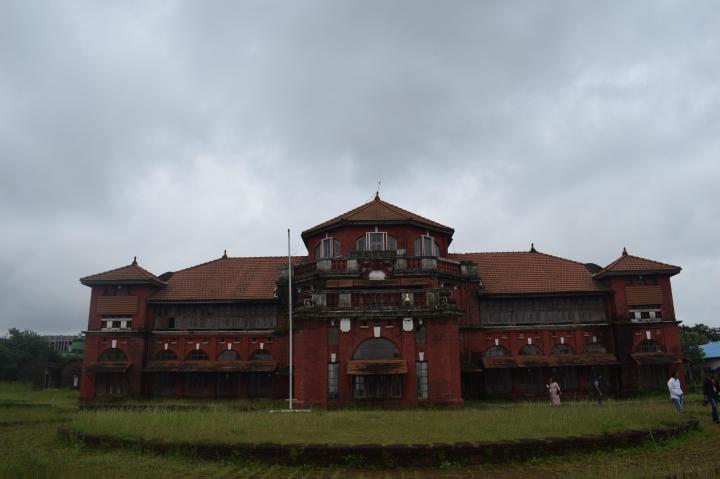
While tourists aren’t permitted to take photographs within the palace, the red-brick structure spanning 27 acres is an architectural marvel. The palace is renowned for its distinctive Burmese-style roof and its tranquil ambience.The Thibaw Palace museum preserves a collection of artifacts from the Burmese royal family, but I only liked the room with the king and queen’s replicas and chair.
Thibaw Palace is open from 9am-6pm, with an entry fee of Rs 50 for adults and Rs 25 for children.
Quick Facts about Ratnagiri
How to reach Ratnagiri: It is easily accessible by road and rail from major cities such as Mumbai and Pune. The nearest international airport is in Goa, which is approximately a 4-5 hour drive from Ratnagiri.
Where to stay in Ratnagiri: We stayed at the Kohinoor Samudra Beach Resort, a luxurious getaway offering panoramic views of the Arabian Sea. The resort is surrounded by lush coconut and Suru tree plantations, creating a scenic backdrop. It is a 7-hour drive from Pune.
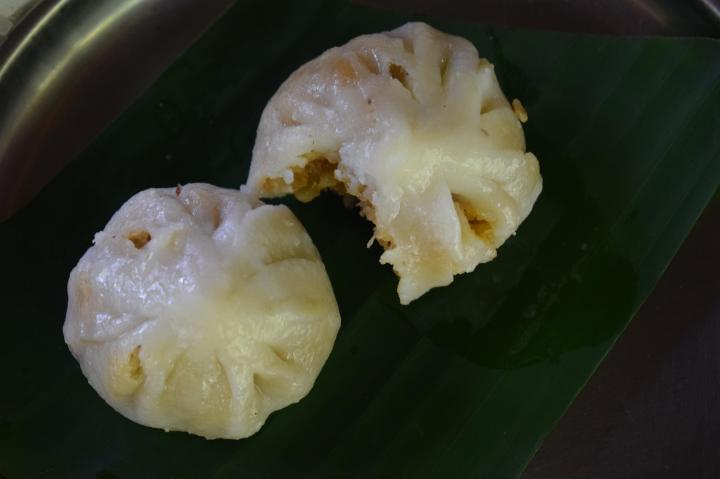
Local delicacies to savour: Misal Pav, Vada Pav, Kokum Sherbet, Sol Kadhi, Modaks, Sabudana Khichdi, and Poha.
Ideal Duration: For a slow-paced exploration of natural trails, flora, and fauna, consider a week-long stay in Ratnagiri. For a general visit, three days are sufficient to cover the key attractions. During the winter months of November to January, bioluminescence is visible at Ratnagiri and people rush to watch the mesmerizing spectacle.
What more to see in Ratnagiri: These include the Wax Museum, Marine Museum, Ganapatipule Beach, Ganeshgule Beach, Jaigad Fort, Bhatye Beach, Tilak Ali Museum, Devgad Fort, Pandre Samudra, and Lokmanya Tilak Janmasthan.
This trip was undertaken at the invitation of the Department of Tourism, Government of Maharashtra, for the International Ganesha Festival 2023. The views and experiences expressed in this article are personal and authentic.
This blog post is part of the blog challenge ‘Blogaberry Dazzle’ hosted by Cindy D’Silva and Noor Anand Chawla in collaboration with Dr. Preeti Chauhan.




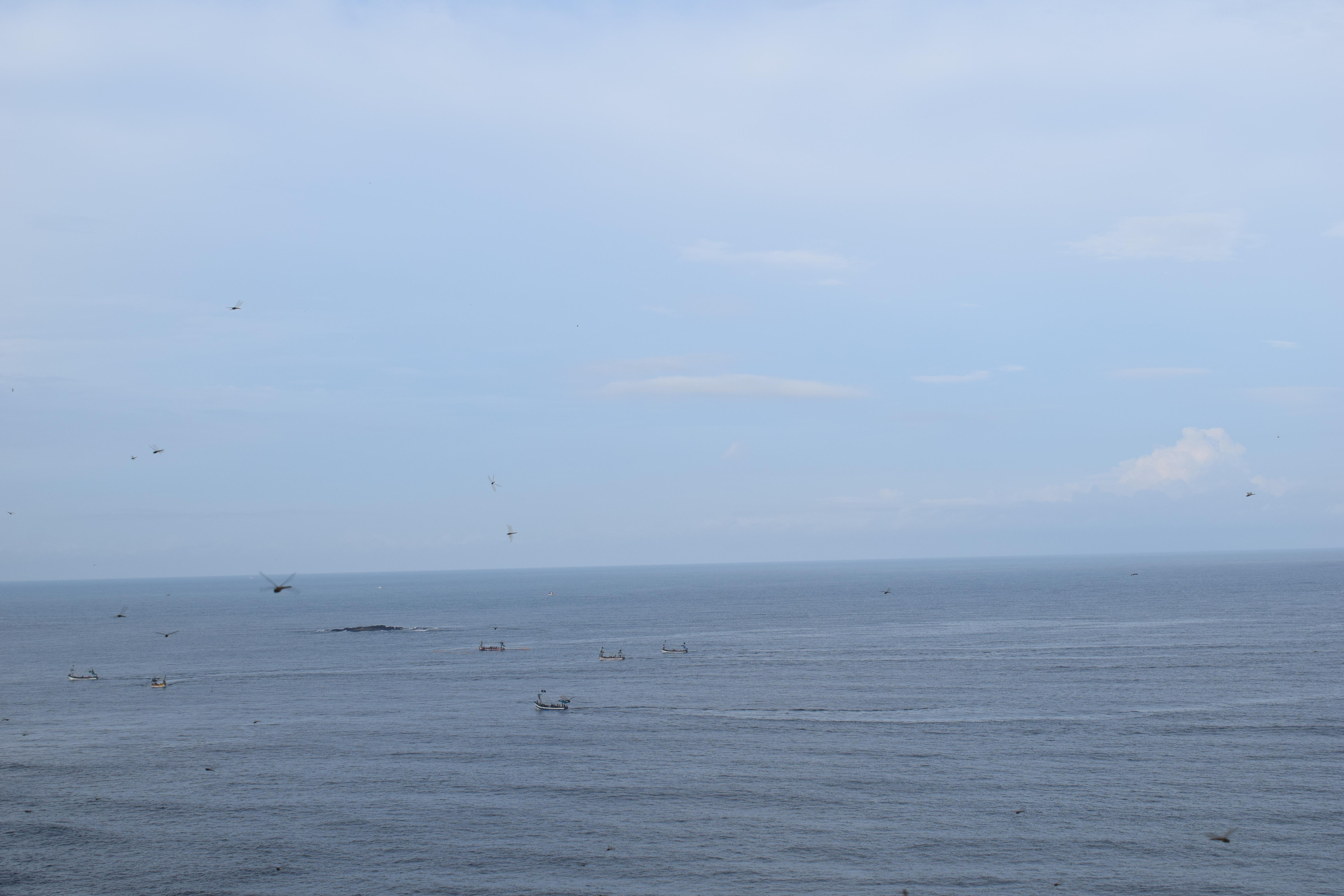
You have shown me the coast beauty that is the Konkan area. And with fresh seafood, we would not want to miss Ratnagiri. A guided tour through the Magic Garden would certainly give us a peek into various aspects of life. And if you were into poetry I can see planning a visit to Keshavsut Smarak. We might find a visit to the Thibaw Palace with its poignant history a bit more in line with our interests. And would love to visit for the bioluminescence.
LikeLiked by 1 person
Years ago I spent a few days in Goa – I bought a novel there, calles Ratnagiri – which was set in Ratnagiri. Although I do not remember anything of the story I still remember the titel. Your post filled my imagniations with pictures of this place. The Thibaw Palace looks like my kind of place to visit. I am also intereste in the poet Keshavasut – although I do find it difficult to relate to authors I am not familiar with, sometimes.
LikeLike
I haven’t been on a trip to Ratnagiri in Maharashtra, so thanks for all these details. Bal Gangadhar Tilak’s hometown you say? I will definitely plan my visit here with my daughter. The Eco museum looks so nice. I would love a thali here complete with modak! Yumm yummmm…from Bhushavali Natarajan
LikeLike
Ratnagiri sounds like a very peaceful place to spend a relaxing holiday whilst learning about the local customs. I would love to visit the Magic Garden and take a spice tour there. I would also leave with a lot of edible souvenirs. I like that the place is empowering local women by employing them and encouraging them to interact with tourists. The Thibaw Palace sounds like an interesting place to visit as well whilst in Ratnagiri. I have never seen Burmese things before.
LikeLiked by 1 person
It was a beautiful day for me as well. It’s a serene town.
LikeLike
Ratnagiri sounds like a dream of a coastal town. You just mentioned two of my favourite things mangoes and seafood! The local delicacy you photographed looks really delicious and your description of travelling with the coast on one side filled with fishermen jetties sounds heavenly to me
LikeLiked by 1 person
It is a heavenly.place. sadly we only got one day here.
LikeLike
I love how you related yourself to a bird soaring. It really expressed the beauty of the area. I’m also glad you covered how the area got its name with the story of the axe. Really interesting! I’ve been to India but didn’t get to this area, unfortunately. I did love seeing it through your eyes and words and hope to get there some day!
LikeLiked by 1 person
Konkan sounds like a very picturesque strip of land that must be explored! Rat agiri’s Magic Garden would definitely be on my list of sights to see. The Thibaw Palace sounds very interesting as well. I’d love to learn more of the area’s history, too.
LikeLike
The Konkan coast is really a beautiful place. Loved the idea of the Prachin Konkan Eco Museum in Ratnagiri. A good example of sustainable tourism showcasing local culture. As a devout foodie, can’t wait to taste the local cuisine they offer. Lovely writeup.
LikeLike
I am not really familiar with Ratnagiri but this place is definitely worth the trip. I am particularly interested in visiting the Prachin Konkan Eco-Museum and its enchanting Magic Garden.The founders of this place are amazing. I love their advocacy and their mission to preserve age-old practices while creating livelihood opportunities for the community.
In addition — I would love to try the local delicacies. Bookmarking this post for future reference.
LikeLike
Thank you for the detailed trip details. From Vietnam to Ratnagiri. Your blogs inspire me to travel and also it is a go to place for all details.
LikeLike
I have heard about Ratnagiri, but have never been there. After reading your article, I’m tempted, I must admit. Ratnagiri is famous for mages, I knew, but didn’t know about the Tibetan connection. The palace is very beautiful. Does it look a little out of place or does it blend with the surroundings? Just curious.
LikeLiked by 1 person
it is different from the surroundings, however, the vast emptiness and green around it camouflage it
LikeLike
Your vivid depiction of the Konkan Coast exploration in Ratnagiri beautifully captures the rich history and cultural tapestry of the region. The mention of hidden gems like Prachin Konkan Eco-Museum and Magic Garden paints a vivid picture of the rustic village life. Your journey through Keshavsut Smarak, Ratnadurg Fort, and Thibaw Palace adds depth to the narrative, immersing me in Ratnagiri’s cultural legacy.Your blog evokes a genuine sense of enchantment and leaves me yearning to go there,
LikeLiked by 1 person
It is the perfect place to rejuvenate.
LikeLike
When it comes to places untouched, I’m usually caught between happy for it to be shown to many or fearing that this untouched beauty would be full of tourists eventually. So happy you’re able to see this place and share it with us!
LikeLiked by 1 person
Ratnagiri is my native place. But still I haven’t been to Ganpati Pule. By your post I get new information on travel spot. I hope you liked our ukadiche modak. It is one of our means whole ratnagirijar’s favourite sweet.
LikeLiked by 1 person
I loved Ukadiche Modak, I am trying to find them in Delhi.
LikeLike
Ambica I never knew that there is a poetess in you. The first few lines clearly indicates the poetry skill you hold. I read those few lines atleast 5 times if am not wrong and Oh how soothing are they. The beginning of the post is so beautiful that it made the rest by default soothing to read for me. Yes, I know you are an excellent travel blogger and no doubt in that and once again you take me with you for a virtual tour to another wonderful destination called Ratnagiri. Keep inking such wonderful posts
LikeLike
Thank you Samata, as always you are very kind with your praise. I hope you do go to visit these green places.
LikeLike
This is a fantastic post well written. 3D dino shows, Magic shows, and the modak everything looks so amazing and must have been a great treat to your inner child. 🤩🤩🤩✨✨✨
LikeLike
Like I always say, your posts are long but they have such quality content. Loved to see the konkan coast thru your eyes Ambica… I didn’t know the origin of the name.
Btw, Ratnagiri always felt like a mountainous region to me but ofcourse it isn’t… I’m so glad to learn more about the place through your post.
I was about to say, ‘isn’t there a wax museum there’… but saw that uv mentioned it.
LikeLiked by 1 person
My sister in law and family went to Ratnagiri. They too told me how beautiful the place is. Also these visuals by u r beautiful. And also the detailed itinery is so good!
LikeLiked by 1 person
I have heard of Ratnagiri because of the mangoes but I did not know there is so much history behind it. I always learn something new when I visit your blog. God bless you.
LikeLiked by 1 person
That’s why blogs are great reads .. Real experiences 👌 I have learnt many new dips from your blog.
LikeLiked by 1 person
Ratnagiri sounds like the perfect place to unwind and soak in the local vibes. I haven’t been there myself, so thanks a bunch for all these details. Seems perfect place to rejuvenate. Planning to visit with my kids now for sure. The Eco Museum looks like a must-visit, and oh, a thali with modak—mouthwatering! Thanks for sharing your experience.
LikeLiked by 1 person
have lots of modak and solkadi, i wish i had eaten and drunk more of these
LikeLike
For me, Ratnagiri has always been about mangoes and rarely anything beyond it. Reading your post, it is a place steeped in history and I would love to visit it one day—particularly the Magic Garden. I recall checking out your stories and reels during the International Ganesha Festival. Thanks for consolidating all the information.
LikeLiked by 1 person
Ratnagiri was afantastic experience
LikeLike
Ur post caught my heart it lools like after reading I must pay a visit to Ratnagiri. I love Modak though I had them when I was small. I am keenly looking forward to the magical garden.
LikeLiked by 1 person
a beautiful coastline and serene, you will like it.
LikeLike
I really want to visit the Konkan area, especially Ratnagiri. This post is beautifully depicted about the place, its people, and its culture. I loved the way they celebrated Ganesh Chaturthi. Pictures are really insightful.
LikeLiked by 1 person
The local delicacies mentioned, from Ukadiche Modak to Misal Pav, add a gastronomic dimension to the travel experience. It’s like a sensory journey through Ratnagiri’s flavors. In addition, Your personal reflections on wanting to be a bird soaring high and the sea changing colors with the sky create a poetic ambiance throughout the article. It’s a delightful read.
LikeLiked by 1 person
Ratnagiri sounds fantastic! I hope to visit it someday.
LikeLiked by 1 person
A slow, beautiful place. I hope it remains that way also.
LikeLiked by 1 person
“Ganpatipule is truly a treasure trove of scenic beauty and cultural richness. The pristine beaches with their soft, golden sands and clear blue waters are perfect for relaxation and rejuvenation. The Swayambhu Ganpati Temple is not only spiritually uplifting but also a marvel of architecture nestled against a backdrop of lush greenery. Exploring the Jaigad Fort offers a fascinating peek into the region’s history and provides stunning views of the Arabian Sea. The serene atmosphere, combined with the vibrant local culture and delicious Konkani cuisine, makes Ganpatipule a perfect getaway. Thanks for the detailed guide – it has inspired me to plan my next trip there!”
LikeLike